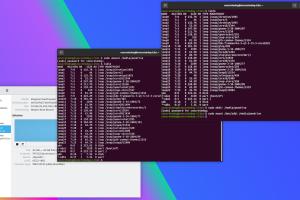Mastering Linux Drive Mounting: Complete Guide on Command Line & GUI

-
Quick Links:
- Introduction
- Understanding Linux Filesystems
- Preparing to Mount Drives
- Mounting Drives Using Command Line
- Mounting Drives Using GUI
- Common Mounting Issues and Solutions
- Case Studies: Real-World Applications
- Expert Insights on Drive Management
- Conclusion
- FAQs
Introduction
Mounting drives on Linux is a fundamental skill for system administrators and users alike. Whether you are setting up a new drive or accessing a USB device, understanding how to mount drives efficiently can save you time and frustration. This comprehensive guide will explore both command-line and graphical user interface (GUI) methods for mounting drives on Linux.
Understanding Linux Filesystems
Before diving into the mounting process, it’s crucial to understand Linux filesystems. Linux supports various filesystems, including:
- ext4: The most common filesystem in Linux, known for its performance and reliability.
- NTFS: Used primarily by Windows, it can be read and written in Linux with the right drivers.
- FAT32: Commonly used for USB drives due to its compatibility with multiple operating systems.
- Btrfs: A newer filesystem with advanced features like snapshots and pooling.
Understanding these filesystems will help you choose the right options during the mounting process.
Preparing to Mount Drives
Before mounting a drive, you need to ensure it is properly connected to your system. Here’s how to prepare:
- Connect the Drive: Physically connect your USB or external drive to the system.
- Identify the Drive: Use the
lsblkcommand to list all connected drives and their partitions. - Create a Mount Point: A mount point is a directory where the drive will be accessible. Use
mkdir /mnt/mydriveto create one.
Mounting Drives Using Command Line
The command line is a powerful tool for mounting drives in Linux. Follow these steps:
Step 1: Open Terminal
Access your terminal to execute commands.
Step 2: Identify the Drive
Run the following command to identify your drive:
lsblkStep 3: Mount the Drive
Use the following command to mount the drive:
sudo mount /dev/sdXn /mnt/mydriveReplace sdXn with your drive identifier (e.g., sdb1).
Step 4: Verify the Mount
To verify if the drive is mounted, use:
df -hStep 5: Unmount the Drive
When finished, unmount the drive using:
sudo umount /mnt/mydriveMounting Drives Using GUI
If you prefer a graphical interface, many Linux distributions offer an easy way to mount drives:
Step 1: Access File Manager
Open your file manager. Drives are usually listed in the sidebar.
Step 2: Locate Your Drive
Click on the drive you wish to mount. It will automatically mount and open a new window.
Step 3: Safely Remove the Drive
To unmount, right-click on the drive icon and select “Unmount” or “Eject.”
Common Mounting Issues and Solutions
Even experienced users may encounter issues while mounting drives. Here are some common problems and their solutions:
- Drive Not Recognized: Ensure the drive is properly connected and check the
dmesglogs for errors. - Permission Denied: Use
sudoto gain root privileges while mounting. - Filesystem Type Not Supported: Install necessary filesystem drivers, such as
ntfs-3gfor NTFS.
Case Studies: Real-World Applications
Understanding how to mount drives can significantly enhance productivity. Here are some real-world examples:
Case Study 1: Data Recovery
A data recovery specialist used Linux to mount a corrupted NTFS drive, allowing access to recover critical data.
Case Study 2: Media Server Setup
A user set up a home media server by mounting multiple external drives using command line, optimizing space and access.
Expert Insights on Drive Management
Experts recommend regularly checking the health of mounted drives using tools like smartctl to prevent data loss.
Conclusion
Mounting drives on Linux can be straightforward with the right knowledge. Whether using command line or GUI, mastering this skill enhances your Linux experience. Regular practice and troubleshooting will make you proficient in managing drives effectively.
FAQs
1. What is the command to list all mounted drives?
You can use the command df -h to view all mounted drives and their usage.
2. How do I know which filesystem my drive uses?
Use the command lsblk -f to see the filesystem type of each drive.
3. Can I mount a drive without root access?
Generally, mounting requires root access, but you can configure specific drives to allow user mounting.
4. What is a mount point?
A mount point is a directory where the mounted drive's files become accessible.
5. How do I mount a drive automatically on boot?
Edit the /etc/fstab file to include your drive and its mount options.
6. What should I do if my drive is not mounting?
Check the connection, use dmesg for error logs, and ensure the filesystem is supported.
7. Can I mount a drive with a different filesystem?
Yes, Linux supports various filesystems, but you may need specific packages (e.g., ntfs-3g for NTFS).
8. Is it safe to remove a drive without unmounting?
No, it's not safe as it may lead to data corruption. Always unmount first.
9. What is the difference between mounting and unmounting?
Mounting makes the drive accessible, while unmounting safely disconnects it from the system.
10. What tools can I use for managing drives in Linux?
Tools like gparted, disks, and terminal commands are effective for managing drives.
Random Reads
- How to set up ftp between two computers
- Mastering pdf cropping
- Mastering pdf attachments
- Mastering pc power supply issues
- How to set a custom background for your steam profile 2021
- How to open locked bathroom door twist push locks
- How to host a web server for free on your computer
- How to make flint and steel in minecraft
- How to make a pie chart
- How to insert an image in photoshop